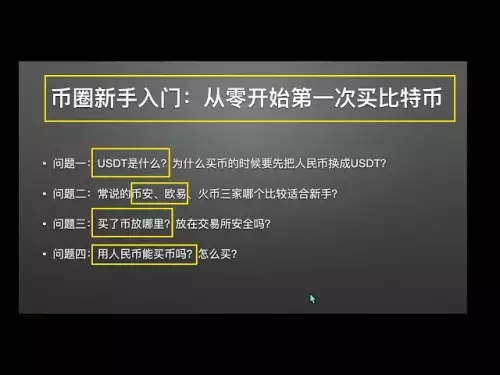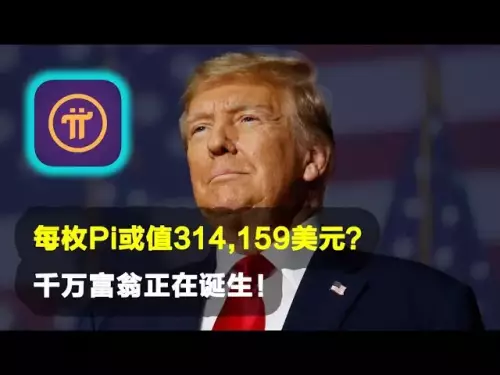-
 bitcoin
bitcoin $113137.862908 USD
0.65% -
 ethereum
ethereum $4107.436072 USD
-1.96% -
 xrp
xrp $2.908808 USD
2.59% -
 tether
tether $1.000294 USD
0.01% -
 bnb
bnb $1010.914842 USD
-1.12% -
 solana
solana $210.653310 USD
-2.16% -
 usd-coin
usd-coin $0.999776 USD
-0.01% -
 dogecoin
dogecoin $0.239360 USD
-0.04% -
 tron
tron $0.337849 USD
0.37% -
 cardano
cardano $0.807698 USD
-0.61% -
 hyperliquid
hyperliquid $45.387447 USD
0.61% -
 chainlink
chainlink $21.408287 USD
-0.92% -
 ethena-usde
ethena-usde $1.000509 USD
-0.04% -
 avalanche
avalanche $32.634682 USD
-4.77% -
 sui
sui $3.349772 USD
-0.19%
How are smart contracts in blockchain written and executed?
Smart contract development involves choosing a language (Solidity, Vyper, Rust), compiling code into bytecode for the blockchain's virtual machine, deploying it (paying transaction fees), interacting via function calls, and prioritizing security by addressing vulnerabilities like reentrancy attacks.
Mar 06, 2025 at 07:07 am
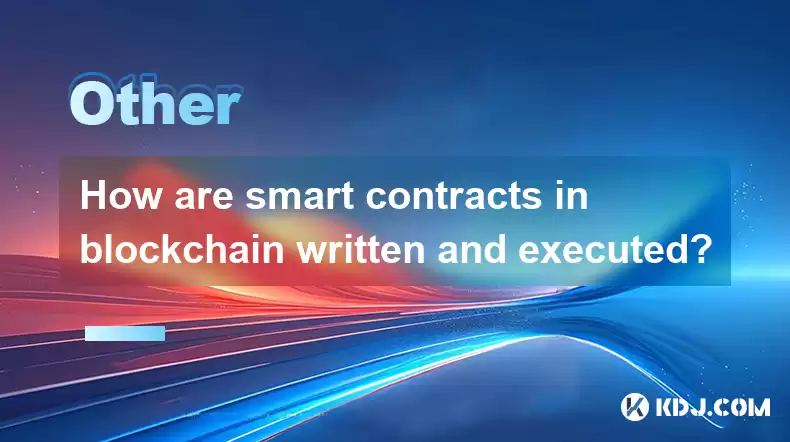
How are Smart Contracts in Blockchain Written and Executed?
Key Points:- Smart Contract Languages: We'll explore the various programming languages used to write smart contracts, focusing on their strengths and weaknesses. This includes Solidity, Vyper, Rust, and others, discussing their suitability for different blockchain platforms and applications.
- The Compilation Process: We will detail the steps involved in transforming human-readable smart contract code into bytecode that the blockchain's virtual machine can understand and execute. This includes the role of compilers, optimizers, and the verification of compiled code.
- Deployment to the Blockchain: We'll examine how compiled smart contracts are deployed onto a blockchain network, including the transaction fees involved, gas consumption considerations, and the process of interacting with deployed contracts.
- Execution Environment: The Virtual Machine: This section will focus on the role of the blockchain's virtual machine (EVM for Ethereum, for example) in executing smart contract bytecode. We'll discuss the concept of state transitions, gas limits, and error handling within the virtual machine.
- Interaction with Smart Contracts: We'll cover how users and other smart contracts interact with deployed contracts, including the use of transactions, function calls, and the retrieval of data stored within the contract's state.
- Security Considerations: A crucial aspect is understanding the security implications of smart contract development and deployment. We'll discuss common vulnerabilities, best practices for secure coding, and the importance of formal verification techniques.
- Step 1: Choosing a Smart Contract Language and Development Environment
The first step in writing a smart contract is selecting an appropriate programming language. Several languages are specifically designed for smart contract development, each with its strengths and weaknesses. Solidity, the most widely used language, is specifically designed for the Ethereum Virtual Machine (EVM). Its syntax is somewhat similar to JavaScript, making it relatively accessible to developers with prior programming experience. However, Solidity's flexibility can also lead to vulnerabilities if not used carefully. Vyper, another language for the EVM, prioritizes security and simplicity over flexibility. It has a more restricted syntax, which helps prevent common coding errors that can lead to vulnerabilities. Rust, a more general-purpose language, is gaining traction for its focus on memory safety and performance. It is being integrated into various blockchain platforms like Solana and Polkadot, offering improved security and efficiency compared to Solidity in certain contexts. The choice of language depends on factors such as the target blockchain platform, the complexity of the smart contract, and the desired level of security.
Beyond the language, selecting a suitable Integrated Development Environment (IDE) is crucial. Several IDEs offer features specifically designed for smart contract development, such as syntax highlighting, debugging tools, and integration with blockchain test networks. Remix, a browser-based IDE, is a popular choice for its ease of use and accessibility. Other options include VS Code with relevant extensions, providing a more robust development experience for larger projects. The choice of IDE depends on individual preferences and project requirements. Regardless of the chosen language and IDE, meticulous planning and design are crucial to creating robust, secure, and efficient smart contracts. The design phase should include detailed specifications of the contract's functionality, input and output parameters, and expected interactions with other contracts or users. This careful planning significantly reduces the risk of errors and vulnerabilities during the coding and testing phases. Thorough consideration should be given to potential edge cases and scenarios that could compromise the security or functionality of the contract.
- Step 2: Writing the Smart Contract Code
Once the language and development environment are chosen, the actual coding process begins. This involves defining the contract's functionality, variables, and functions. Consider a simple example: a contract for a basic token. The code would define the token's name, symbol, total supply, and functions for transferring tokens between accounts. The code needs to handle various scenarios, such as insufficient balance, invalid addresses, and reentrancy attacks. A well-structured codebase is crucial for maintainability and security. Using comments to explain the code's purpose and logic is essential for collaboration and future modifications. Solidity, for instance, allows for the use of modifiers to enforce access control and other constraints, enhancing security and code readability. Vyper, with its simpler syntax, often requires less code to achieve the same functionality, potentially reducing the risk of introducing vulnerabilities. The process of writing smart contract code involves a careful balance between functionality, security, and efficiency. The programmer must consider potential vulnerabilities and design the contract to mitigate them. This requires a deep understanding of the chosen programming language and the underlying blockchain platform. Testing the code thoroughly before deployment is crucial to identify and address any errors or vulnerabilities.
- Step 3: Compiling the Smart Contract
After writing the smart contract code, it needs to be compiled into bytecode. This bytecode is a low-level representation of the code that the blockchain's virtual machine (VM) can understand and execute. Solidity, Vyper, and other smart contract languages rely on compilers to perform this translation. These compilers convert the human-readable code into a machine-readable format suitable for the target blockchain platform. The compilation process may involve optimization steps to reduce the size and improve the efficiency of the bytecode. Compilers often provide options for different optimization levels, allowing developers to balance between code size and execution speed. The compiled bytecode is then ready for deployment onto the blockchain. Before deployment, it’s crucial to verify the compiled bytecode to ensure it accurately reflects the intended functionality of the smart contract. This can involve using tools that analyze the bytecode for potential vulnerabilities or inconsistencies. The verification process helps to identify and address any issues before deploying the contract to the blockchain, preventing potential security breaches or unexpected behavior.
- Step 4: Deploying the Smart Contract to the Blockchain
Deployment involves sending a transaction to the blockchain network, including the compiled bytecode of the smart contract. This transaction is processed by the network's nodes, and once confirmed, the smart contract is deployed and becomes part of the blockchain's state. The deployment process typically requires paying a transaction fee (gas fee in Ethereum) to incentivize miners or validators to include the transaction in a block. The gas fee depends on factors such as the size of the contract, the complexity of the code, and the network's congestion. Optimizing the contract's code for size and efficiency can significantly reduce the deployment cost. After deployment, the smart contract has a unique address on the blockchain, which can be used to interact with it. The contract's address is essentially its permanent identifier within the blockchain network. This address is used by users and other smart contracts to call the contract's functions and interact with its state. The process of deploying a smart contract to a blockchain involves several steps, and understanding the intricacies of these steps is essential for successful deployment.
- Step 5: The Execution Environment: The Virtual Machine
The blockchain's virtual machine (VM) is responsible for executing the smart contract's bytecode. For Ethereum, this is the Ethereum Virtual Machine (EVM). The EVM is a stack-based machine that interprets the bytecode instructions sequentially. Each instruction performs a specific operation, modifying the VM's state. The VM's state includes the contract's storage, memory, and other relevant data. The execution of smart contracts involves a series of state transitions, where the VM's state changes based on the instructions executed. Gas limits are crucial for controlling the computational resources consumed by smart contract execution. Each instruction consumes a certain amount of gas, and transactions are limited by a maximum gas limit. This prevents contracts from consuming excessive resources and potentially causing denial-of-service attacks. Error handling within the VM is also important, as contracts may encounter errors during execution. The VM handles these errors gracefully, preventing unexpected behavior or crashes. Understanding the VM's architecture and execution model is essential for writing efficient and secure smart contracts.
- Step 6: Interacting with Smart Contracts
Once deployed, smart contracts can be interacted with using transactions. These transactions typically involve calling functions within the contract, passing arguments as needed. The contract's functions are defined in the code and specify the operations performed when called. For example, a token transfer function might take the recipient's address and the amount of tokens to transfer as arguments. The contract's state is updated based on the execution of these functions. Users can interact with deployed contracts using various tools and interfaces, such as web3.js libraries or blockchain explorers. These tools provide convenient ways to interact with contracts, simplifying the process of calling functions and retrieving data. Retrieving data from the contract's storage involves querying the blockchain for the contract's state variables. This allows users to view the contract's current status and relevant data. The interaction with deployed smart contracts is crucial for utilizing their functionality.
- Step 7: Security Considerations
Security is paramount in smart contract development. Common vulnerabilities include reentrancy attacks, integer overflows, and denial-of-service attacks. Reentrancy attacks occur when a malicious contract calls back into the original contract during execution, potentially causing unexpected behavior. Integer overflows can occur when arithmetic operations exceed the maximum value of a data type, leading to incorrect results. Denial-of-service attacks can be launched by consuming excessive resources during contract execution. Best practices for secure coding include using well-tested libraries, thoroughly validating inputs, and employing access control mechanisms. Formal verification techniques can help to mathematically prove the correctness and security of smart contracts. Auditing the code by security experts is also crucial to identify and address potential vulnerabilities before deployment. The importance of security in smart contract development cannot be overstated, as vulnerabilities can lead to significant financial losses or other negative consequences.
FAQs:Q: What are the most popular smart contract languages besides Solidity and Vyper?A: While Solidity and Vyper dominate the Ethereum ecosystem, other languages are emerging. Rust is gaining significant traction due to its focus on memory safety and performance, finding adoption in various blockchain projects beyond Ethereum. Move, the language used by the Diem blockchain (formerly Libra), emphasizes security and resource management. Each language offers a different balance of ease of use, security features, and performance characteristics, catering to various development needs and blockchain platforms.
Q: How do I choose the right smart contract language for my project?A: The best language depends on several factors. Consider the target blockchain platform (Ethereum, Solana, etc.), the complexity of your contract, and your team's expertise. Solidity's familiarity and wide community support are attractive, but its flexibility can also introduce vulnerabilities. Vyper prioritizes security but might be less flexible. Rust offers performance and safety but requires a steeper learning curve. Thoroughly evaluate your project's requirements and the strengths and weaknesses of each language before making a decision.
Q: What is the role of gas in smart contract execution?A: Gas is a mechanism used to limit the computational resources consumed by smart contracts. Each instruction in the smart contract's bytecode consumes a certain amount of gas. Transactions are limited by a maximum gas limit, preventing contracts from consuming excessive resources and potentially causing denial-of-service attacks. The cost of gas is paid in the native cryptocurrency of the blockchain (e.g., ETH on Ethereum). Efficiently written smart contracts minimize gas consumption, reducing transaction costs.
Q: How can I ensure the security of my smart contract?A: Smart contract security is crucial. Follow secure coding practices, including thorough input validation, avoiding common vulnerabilities (reentrancy, integer overflows), and using well-tested libraries. Employ access control mechanisms to restrict access to sensitive functions. Consider formal verification techniques to mathematically prove the correctness of your code. Most importantly, have your smart contract professionally audited by reputable security experts before deployment to identify and mitigate potential vulnerabilities. Regular security updates and monitoring are also essential after deployment.
Disclaimer:info@kdj.com
The information provided is not trading advice. kdj.com does not assume any responsibility for any investments made based on the information provided in this article. Cryptocurrencies are highly volatile and it is highly recommended that you invest with caution after thorough research!
If you believe that the content used on this website infringes your copyright, please contact us immediately (info@kdj.com) and we will delete it promptly.
- Tether's Funding Frenzy: A $500 Billion Stake in the Stablecoin Game
- 2025-09-25 10:25:14
- Layer 2, Tokenomics, and Network Overhauls: What's the Buzz?
- 2025-09-25 10:25:14
- WLFI, Ethereum, BlockDAG: Decoding the Hype - What's Real?
- 2025-09-25 10:45:16
- Crypto Millionaires, Boom, and New Wealth: Riding the Bitcoin Wave in 2025
- 2025-09-25 10:30:01
- Coinbase, Cloudflare, and AI Payments: A New Dawn for Agent Economies
- 2025-09-25 10:45:16
- Ripple, Solana, BullZilla Presale: Navigating the Crypto Landscape in 2025
- 2025-09-25 10:30:01
Related knowledge
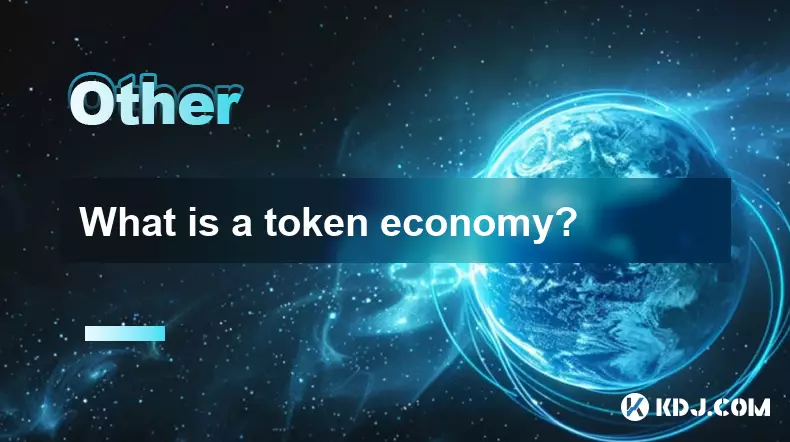
What is a token economy?
Sep 20,2025 at 12:18am
Understanding the Foundations of a Token Economy1. A token economy in the context of cryptocurrency refers to a system where digital tokens are used a...
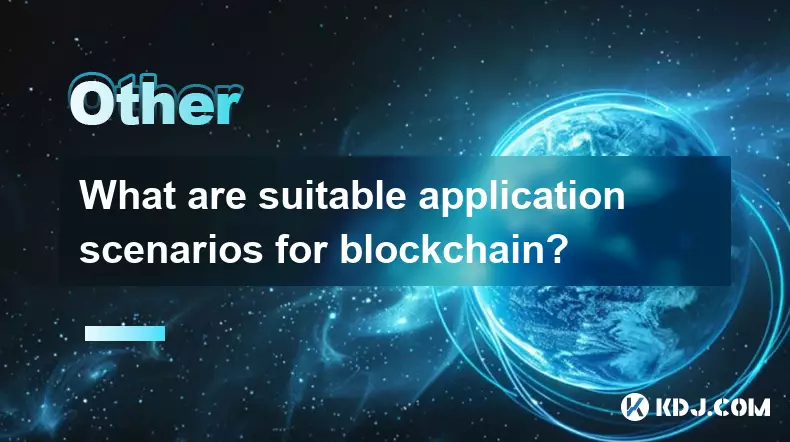
What are suitable application scenarios for blockchain?
Sep 20,2025 at 03:19am
Decentralized Finance (DeFi) Platforms1. Blockchain enables the creation of financial services without centralized intermediaries, allowing users to l...
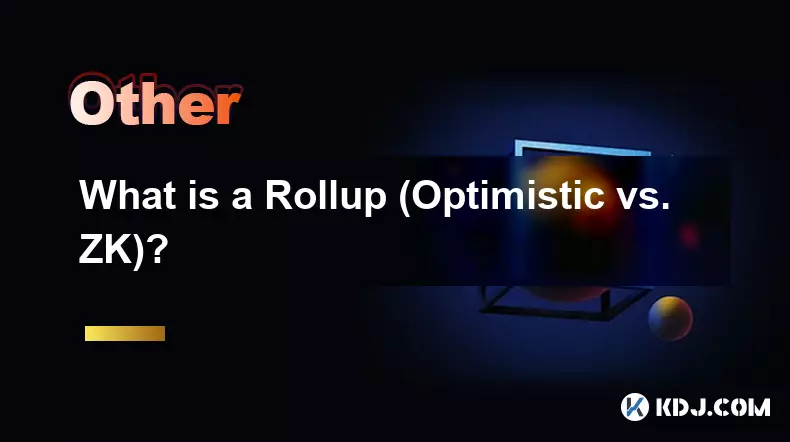
What is a Rollup (Optimistic vs. ZK)?
Sep 22,2025 at 03:00pm
Understanding Rollups in Blockchain Technology1. Rollups are layer-2 scaling solutions designed to increase transaction throughput on blockchains like...
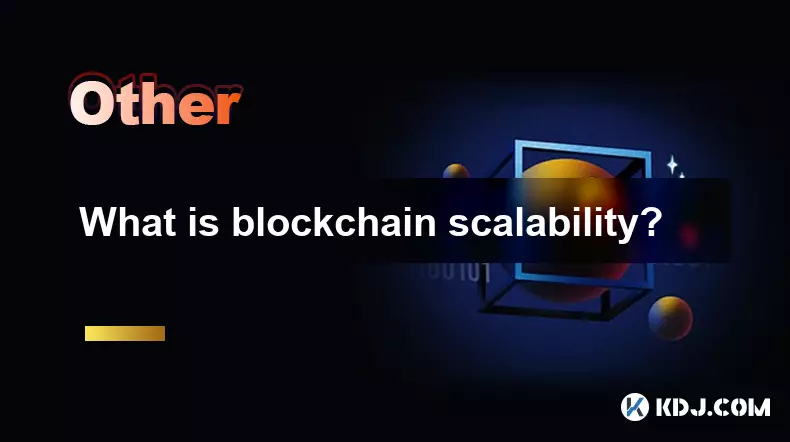
What is blockchain scalability?
Sep 19,2025 at 06:18am
Understanding Blockchain Scalability1. Blockchain scalability refers to a network's ability to handle an increasing number of transactions without com...
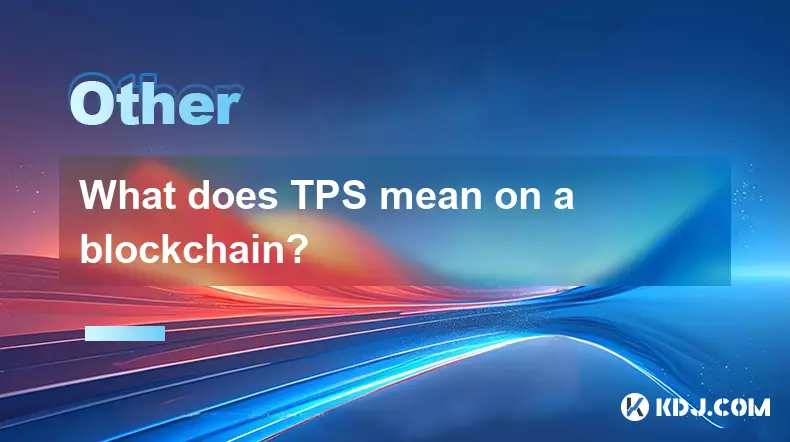
What does TPS mean on a blockchain?
Sep 21,2025 at 09:54am
Understanding TPS in Blockchain Technology1. TPS stands for Transactions Per Second, a metric used to measure the number of transactions a blockchain ...
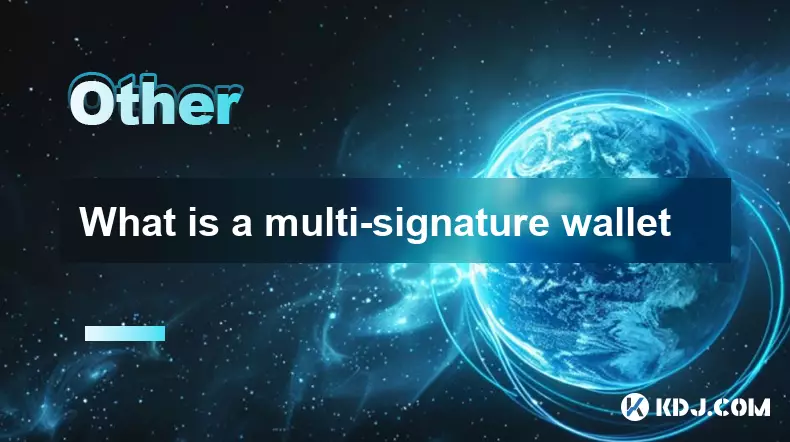
What is a multi-signature wallet
Sep 20,2025 at 07:00am
Understanding Multi-Signature Wallets in Cryptocurrency1. A multi-signature wallet, often referred to as a multisig wallet, is a type of cryptocurrenc...

What is a token economy?
Sep 20,2025 at 12:18am
Understanding the Foundations of a Token Economy1. A token economy in the context of cryptocurrency refers to a system where digital tokens are used a...

What are suitable application scenarios for blockchain?
Sep 20,2025 at 03:19am
Decentralized Finance (DeFi) Platforms1. Blockchain enables the creation of financial services without centralized intermediaries, allowing users to l...

What is a Rollup (Optimistic vs. ZK)?
Sep 22,2025 at 03:00pm
Understanding Rollups in Blockchain Technology1. Rollups are layer-2 scaling solutions designed to increase transaction throughput on blockchains like...

What is blockchain scalability?
Sep 19,2025 at 06:18am
Understanding Blockchain Scalability1. Blockchain scalability refers to a network's ability to handle an increasing number of transactions without com...

What does TPS mean on a blockchain?
Sep 21,2025 at 09:54am
Understanding TPS in Blockchain Technology1. TPS stands for Transactions Per Second, a metric used to measure the number of transactions a blockchain ...

What is a multi-signature wallet
Sep 20,2025 at 07:00am
Understanding Multi-Signature Wallets in Cryptocurrency1. A multi-signature wallet, often referred to as a multisig wallet, is a type of cryptocurrenc...
See all articles
























